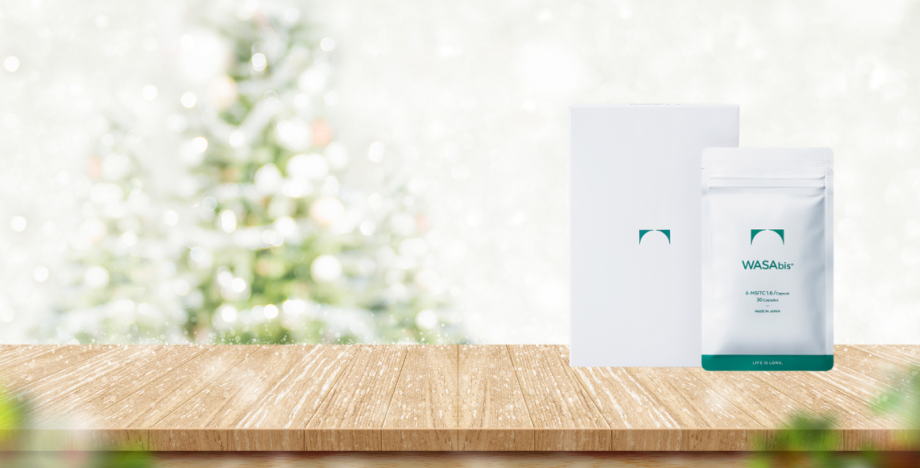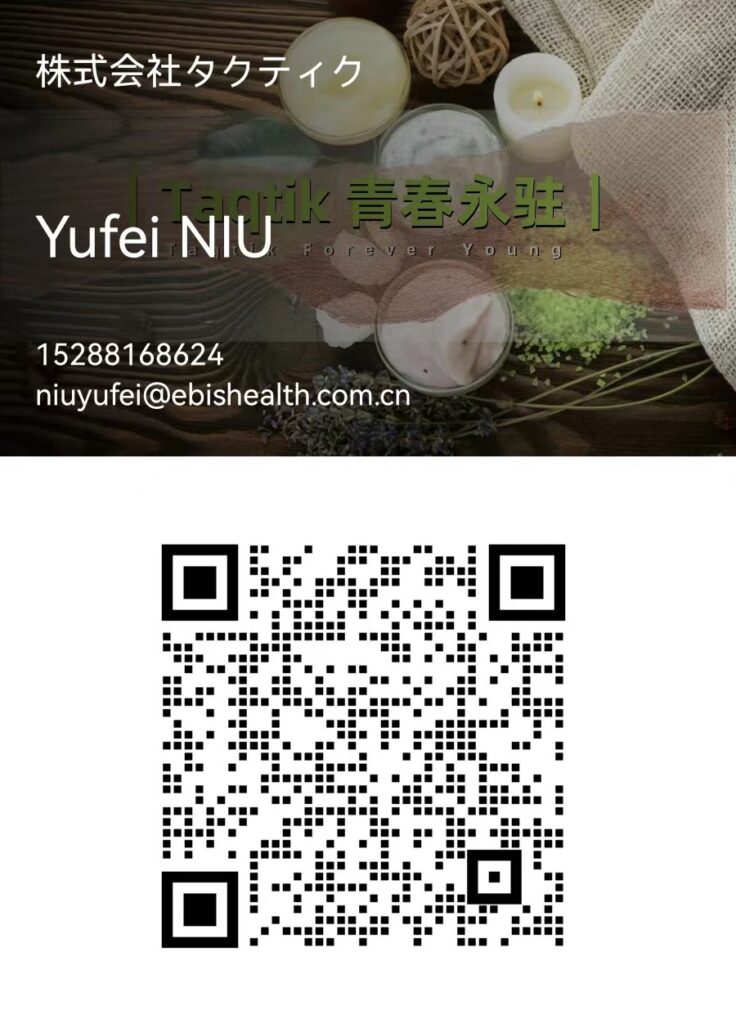Natural functional ingredient of Wasabi
What is “Wasabi Sulfinyl®”?Another potential ingredient NOMON identified is derived from wasabi, a plant native to Japan. In our interview Dr. Isao Okunishi, a pioneer of studying wasabi and Director of R&D Department at Kinjirushi Wasabi Co., Ltd, he explained secrets of wasabi that would make “LIFE IS LONG” come true.
Wasabi is one of the essential ingredients in Japanese diet. A few million years ago original species of wasabi were brought form ancient China and uniquely evolved as a native Japanese wasabi. About 1300 years ago wasabi was recorded in the Japanese history for the first time: from historical materials unearthed from ancient ruin of Asuka Period (from end of the 6th century to the early 8th century) describes wasabi as a medicinally. After Kamakura Period (1185-1333) wasabi became a food ingredient and started to be used as relishsince Edo Period (1603-1867). Deodorant effect and antibacterial effect on food of wasabi have long supported health and daily diet of Japanese people.
Kanajirushi Co., Ltd., a Nagoya-based company has been engaged in research of wasabi as a medicinally for 20 years to unravel medical its medical components. Although there was a research data indicating that wasabi could suppress cancer cells, but no other data supported the function. So the company started from basic research from scratch.

Wasabi enhances original antioxidant capacity of cells“Wasabi is divided into two categories: wasabi and horseradish. For both wasabi and horseradish have same main ingredient of pungency but constituent components are very different. Our research focuses on wasabi. A rhizome of wasabi contains tiny amount of functional ingredient “6-methylsulfinylhexyl isothiocyanate (6-MSITC)” and in basic research we discovered this functional ingredient has high potency of antioxidative effect.”
(Isao Okunishi, Director of Research and Development)
Organisms maintain lives by utilizing oxygen that constitutes 20% in the atmosphere. In response to external stimulation, oxygen changes to active oxygen to play roles in cell communication and immune function. However excess production of the active oxygen injurs cells and contributes to diseases, such as cancer, cardiovascular disease and life-style diseases. In order to protect cells from the active oxygen, organisms have an innate capability of antioxidative function, which is supported by antioxidant.
“Antioxidants like polyphenol normally directly acts on active oxygen and remove it. However, antioxidant effect of wasabi has a totally different mode of action that directly acts on cells to suppress production of antioxidant by enhancing original antioxidation capacity of the cells. In fact, production of active oxygen was suppressed by 48% in mouse studies.
Assuming this is a fire, then ordinary antioxidants are fire fighters trying to extinguish the fire, while the antioxidant of wasabi is like a frame-retardant material of protecting a house from breaking out fire. Since cells can avoid exposure to damage caused by active oxygen, effect antioxidant of wasabi is highly efficient. In fact, it is validated that adding single dose of 6-MSITC to a rat cells elevate production level of protein that protects the cells from oxidative stress for 24 hours.“ *1

Various efficacy attributes in functional ingredients of wasabiClinical studies that measures level of oxidization stress after intense exercises demonstrated functional ingredients of wasabi suppress generation of active oxygen and mitigate oxidization stress. Furthermore, skin whitening effects on sport and freckles as well as anti-inflammatory effect mitigating knee joint pain are demonstrated in the studies. Also, inhibitory action of platelet agglutination was confirmed by basic studies, indicating another potential efficacy of the functional ingredients. (*2)
“The functional ingredient 6-MSITC is contained in rhizome of wasabi and comes from enzymic reaction as grated, but the reaction also generates allyle isothiocyanate, a pungency component. In order to utilize 6-MSITC as health food product, we developed a material not containing pungency component, and named it “Wasabi Sulfinyl®”.”
Active oxygen, known as an inducer of arteriosclerosis, cancer and life-style diseases, triggers hypoactivities in various cells and tissues. Because of its functions of preventing active oxygen generation, we can expect anti-aging effect of “Wasabi Sulfinyl®”.
“Regarding anti-aging, what we can expect “Wasabi Sulfinyl®” is providing not only high antioxidative effects. We have discovered its certain positive effects on brain neurons.”

Secret Potential of Wasabi Sulfinyl®Transcription factor NRF2, one of the proteins that combines with DNA and control gene expression, has a significant role to play in a cell protection process. Transcription factor is. NRF2 is activated by oxidant stress generated by active oxygen and protect cells. In recent years studies revealed that loss of RF2 weakens cells against external stresses and cells become more susceptive to internal stress such as active oxygen. Also it is demonstrated in animal studies that “Wasabi Sulfinyl®” that contains 6-MSITC effectively activates NRF2.
Further innovative research results were presented by Professor Hozumi Hashimoto, Institute of Development, Aging and Cancer (IDAC) Tohoku University at the 4th Wasabi Forum in November 22nd, 2019 hosted by Kinjirushi Co., Ltd. According to the presentation, 6-MSITC activates NRF2 in multiple tissues in body including brain, and the activation of NRF2 is followed by lowering oxidization stress level at central nerve system, suppression of neuroinflammation and improving cognitive function in Alzheimer disease model mice.
“It was believed in the past that neural cell death is irreversible. However recent studies have shown that activated NRF2 promotes reproduction cerebellar neuronal cells and grow for complementing dead neural cells and confirmed increasing level of neurotransmitter secretion.
The previous studies indicate importance of activating NRF2 in persistent and moderate manner for use of health maintenance, and preferential source of NRF2 would be functional ingredients contained in food rather than pharmaceuticals.
Neutraceuticals would be a key for productive aging. Like NMN and Wasabi Sulfinyl®, neutraceuticals are easy to take for health maintenance with proven efficacy based on scientific evidence.
*1 Reference: J Pharmacol Sci 115, 320-328(2011)
*2 Reference: Kinjirushi Wasabi Functionality Laboratory “Functionality of Wasabi-sulfinyl®”



